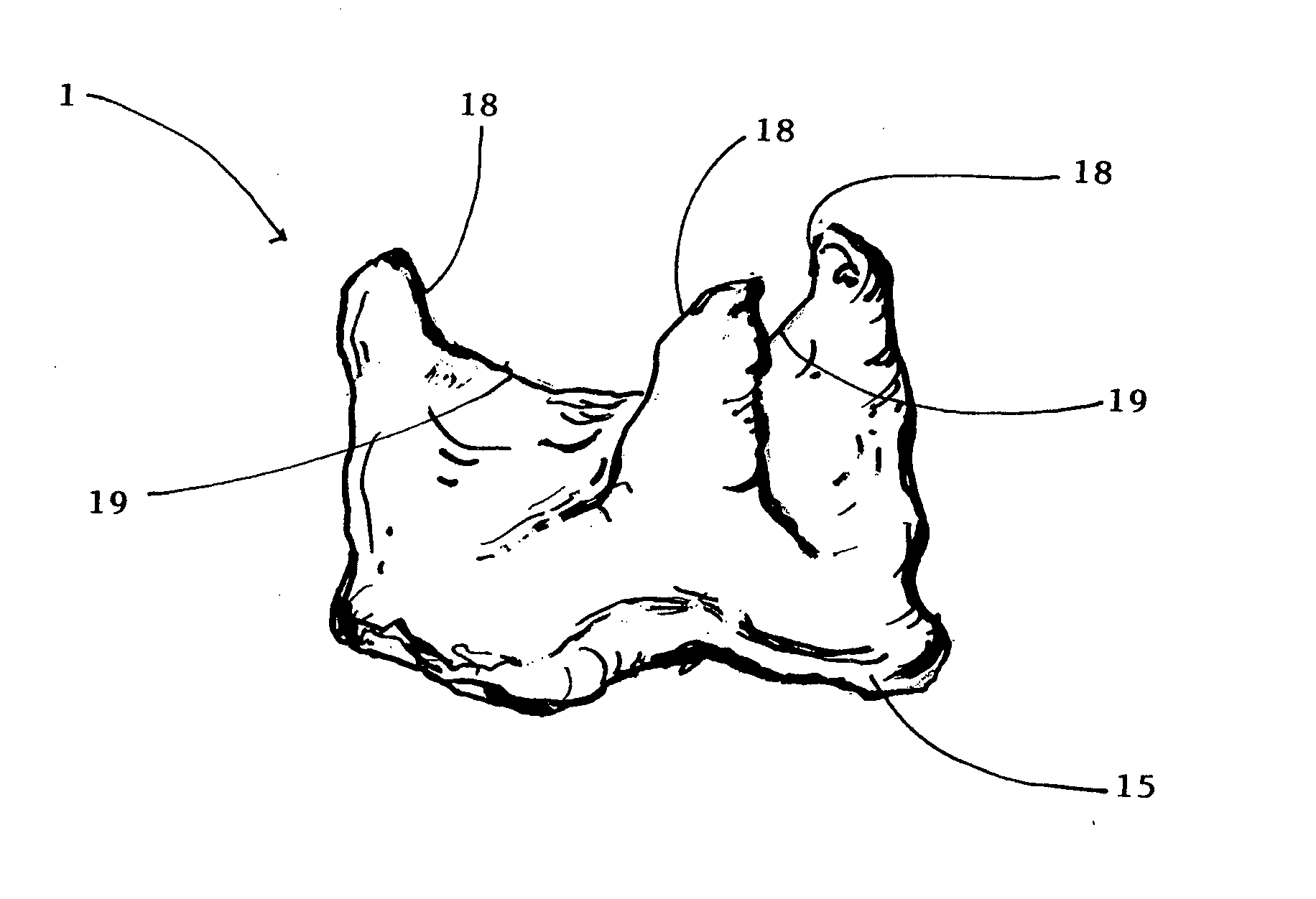Pericardial heart valve replacement and methods of constructing the same
a technology of pericardial valves, which are applied in the field of constructing a pericardial heart valve replacement, can solve the problems of more prone to damage of replacements
- Summary
- Abstract
- Description
- Claims
- Application Information
AI Technical Summary
Benefits of technology
Problems solved by technology
Method used
Image
Examples
first embodiment
[0048]The stents 2 for construction of a living human pericardial heart valve replacement 1 are designed in two embodiments. In the first embodiment the sewing cuff 15 is attached to the stent 2 and is a part of the pericardium from which the heart valve replacement 1 is sutured.
second embodiment
[0049]In the second embodiment the stent 2 and the sewing cuff 15 are two separate components assembled together with sutures or clips after the pericardium has been sutured to the stent 2. This separate arrangement simplifies suturing the pericardium to the stent 2 and allows for the use of larger sewing cuffs 15 when irregularities in the aortic annulus need be sealed. Stents 2 and sewing cuffs 15 are preferably coated or impregnated with various agents to enhance their resistance to thrombosis, anticalcification or retard pannus overgrowth, such as alpha oleic acid or Carbofilm.
[0050]The stentless living pericaridial heart valve replacement 1 for open surgical implantation involves suturing the human pericardial heart valve replacement 1 directly in place of the native heart valve without the use of a stent 2. The size and shape of the heart valve replacement 1 annulus and height of commissural attachments is determined by three-dimensional imaging (echocardiography, CT or MRI) o...
PUM
 Login to View More
Login to View More Abstract
Description
Claims
Application Information
 Login to View More
Login to View More - R&D
- Intellectual Property
- Life Sciences
- Materials
- Tech Scout
- Unparalleled Data Quality
- Higher Quality Content
- 60% Fewer Hallucinations
Browse by: Latest US Patents, China's latest patents, Technical Efficacy Thesaurus, Application Domain, Technology Topic, Popular Technical Reports.
© 2025 PatSnap. All rights reserved.Legal|Privacy policy|Modern Slavery Act Transparency Statement|Sitemap|About US| Contact US: help@patsnap.com



